Key takeaways
- The banshee symbolizes grief and loss, acting as a spectral messenger prompting emotional confrontation with mortality.
- Common sightings of the banshee often coincide with impending death, serving as a solemn reminder rather than a source of fear.
- The sound of the banshee is emotional, shifting from piercing shrieks to mournful moans, reflecting deep sorrow and connection to the listener’s feelings.
- Documenting banshee encounters benefits from paying close attention to sensory details and emotional atmospheres, revealing deeper insights into the experiences.
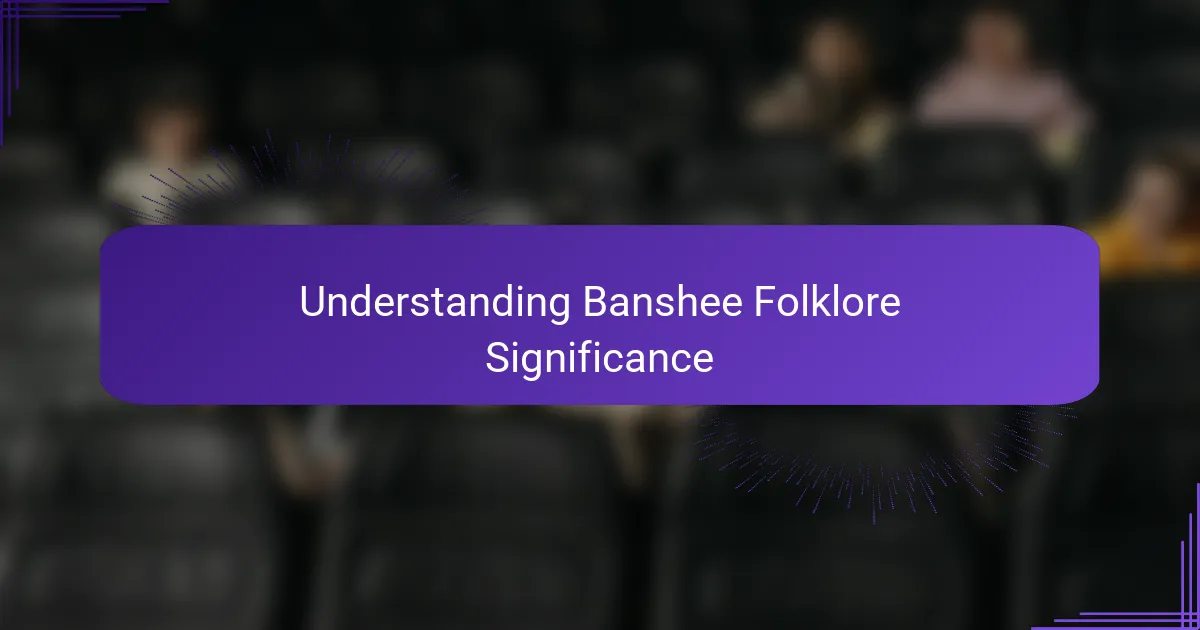
Understanding Banshee Folklore Significance
When I first encountered the banshee in folklore, I was struck by how deeply it symbolizes more than just a ghostly figure. To me, the banshee embodies the raw human connection to grief and loss, almost like a spectral messenger that forces us to confront our mortality. Have you ever wondered why such a haunting figure would be tied to both fear and a strange kind of reverence?
The significance of the banshee goes beyond mere superstition; it taps into cultural identity and collective memory. From my experience researching this lore, it’s clear that communities have used the banshee’s wail to articulate grief that words cannot capture—a powerful emotional release masked as eerie folklore. I find this dual role fascinating because it reveals how storytelling helps us process the things that frighten us most.
What’s really intriguing is how the banshee’s presence varies across tales yet always maintains a strong thread of warning and care. Personally, this blend of ominous and protective qualities makes me think about how we as humans use myths not just to scare but to prepare ourselves emotionally for inevitable loss. Have you noticed how listening to such stories makes us feel both uneasy and comforted at the same time?
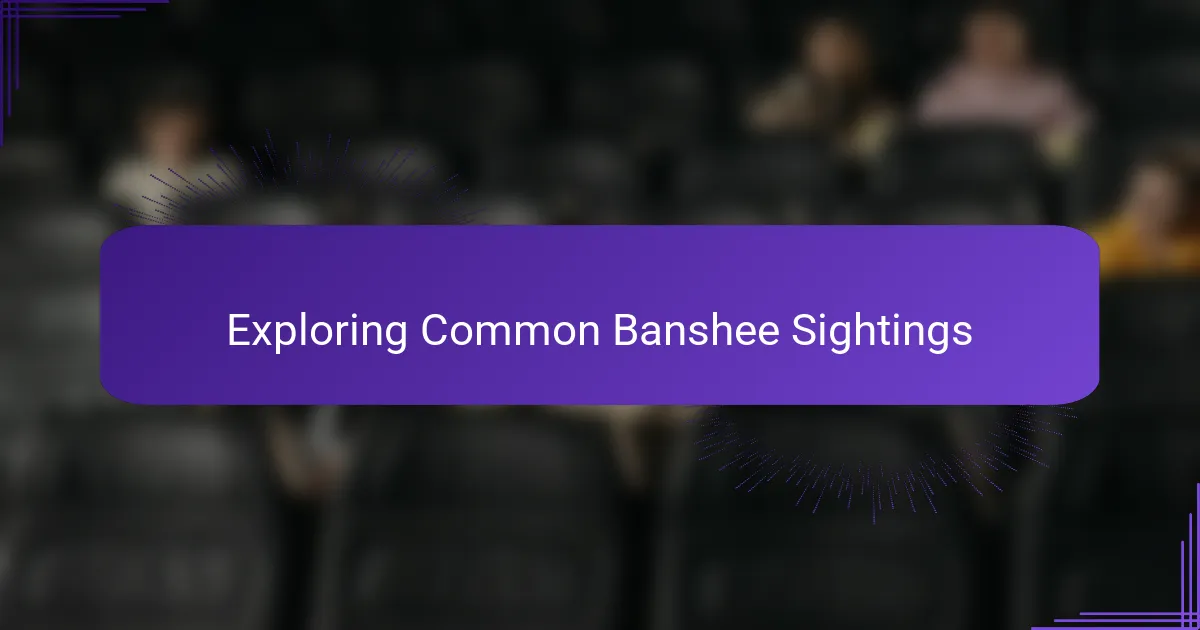
Exploring Common Banshee Sightings
Many accounts of banshee sightings describe her as a pale woman with long, flowing hair, often seen near old family homes or ancient trees. I remember reading one story where a witness felt an overwhelming chill just before hearing her piercing, mournful cry—it’s that sudden shock of presence that lingers with me the most. Have you ever experienced a moment so fleeting yet impossible to forget?
What struck me about common sightings is their timing—usually close to a death in the community or family lineage. This pattern makes me wonder if the banshee serves as an eerie herald, blending sorrow with inevitability. It’s as if the banshee’s appearance is less about frightening and more about reminding us to brace ourselves emotionally.
Sometimes, these encounters are described not with fear, but with a strange sense of respect or solemnity. From my exploration, I sense that witnesses often feel a quiet acknowledgment of the banshee’s role, almost like sharing in a secret grief. Do you think that’s why these stories persist; because they give shape to the unspoken pain we all face?
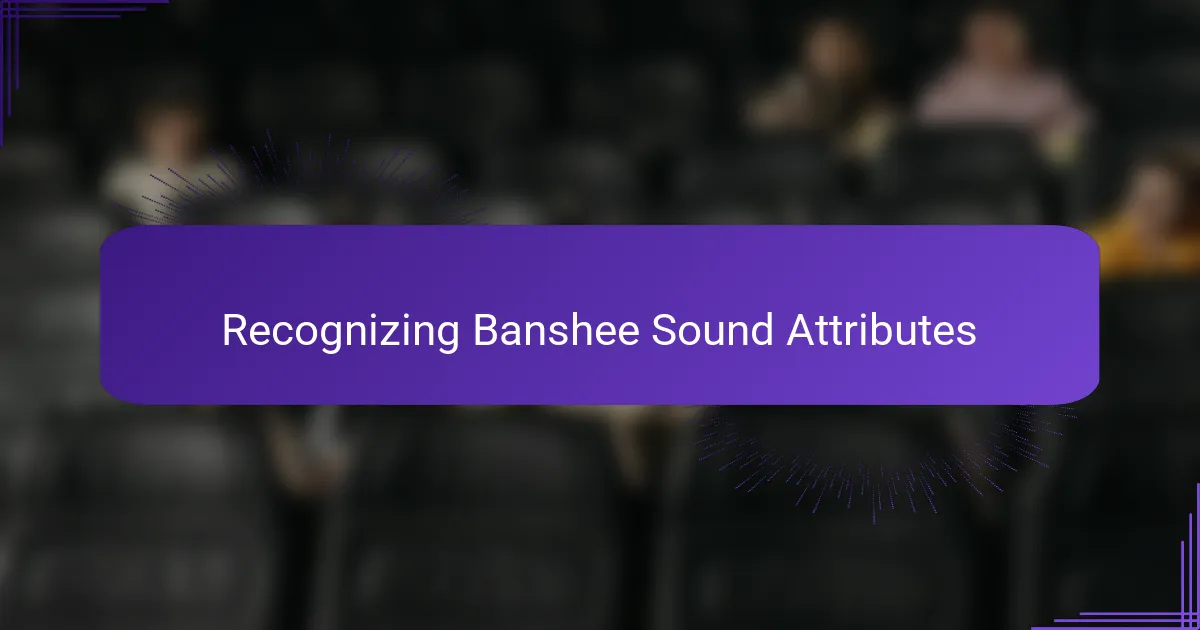
Recognizing Banshee Sound Attributes
The banshee’s sound is unlike anything else I’ve encountered in folklore—sharp, haunting, and lingering. When I first heard descriptions of her wail, I imagined a sound that cuts through the night, almost like a scream stretched out over time. Have you ever experienced a noise so intense it chills you to your core? That’s exactly how the banshee’s call is often described.
What fascinates me most is how the sound isn’t just loud; it carries emotion. I’ve read accounts where the wail shifts from a high, piercing shriek to a low, mournful moan, almost as if the banshee is expressing a deep, sorrowful lament. This variability makes me think the banshee’s cry is more than a warning—it’s a voice full of grief, echoing pain that words can’t fully capture.
Interestingly, the banshee’s sound is sometimes reported as distant and otherworldly, blending with the wind and night sounds. From my experience, this eerie quality adds to the profound sense of unease and anticipation. It makes me wonder—how much does the banshee’s cry tap into our primal fears of the unknown, using sound to touch something deep inside us?
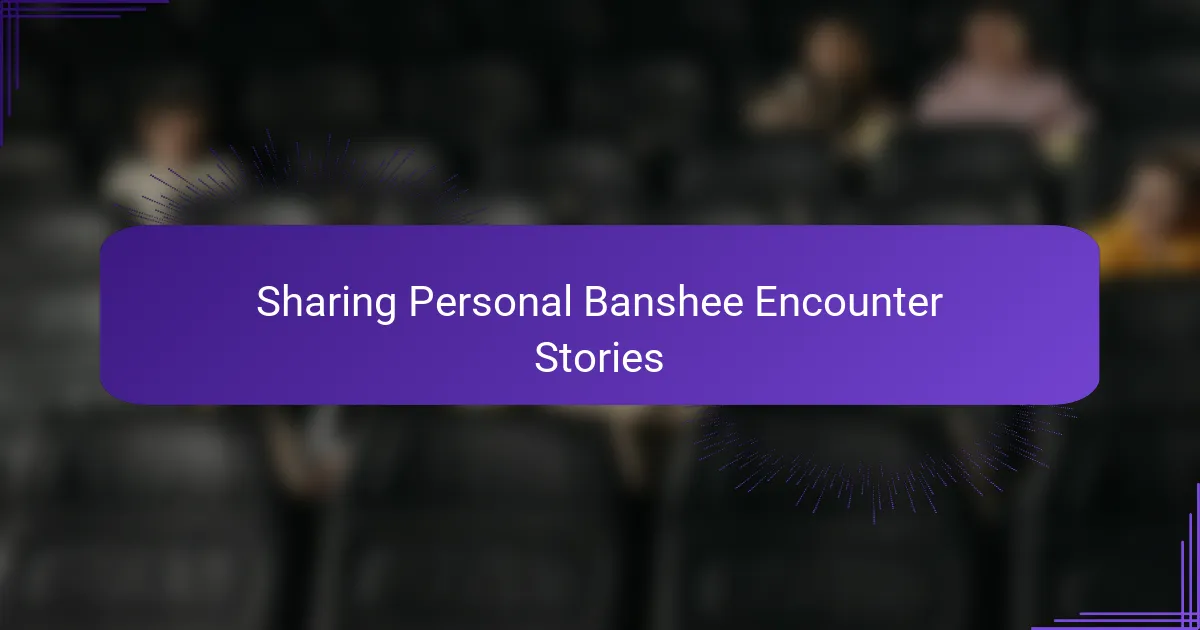
Sharing Personal Banshee Encounter Stories
I still remember the first time someone confided in me about hearing the banshee’s wail—a chilling experience wrapped in sorrow rather than terror. They described standing alone near an ancient oak when that haunting scream sliced through the silence, leaving a weight of grief hanging in the air. Have you ever had a moment where sound grips you so deeply it stays with you long after it ends?
Another story that stuck with me came from a friend whose family has deep roots in rural Ireland. She told me how, on the night her grandmother passed, a soft, mournful cry echoed outside their home just before dawn. It wasn’t frightening, she said, but strangely comforting—like a spectral guardian mourning alongside them. Does this gentle presence change how we perceive loss?
Sometimes, I think these personal encounters with the banshee remind us that she’s more than folklore; she’s a reflection of our own fears and hopes about death. Sharing these stories feels like opening a window into a world where sorrow and respect coexist, inviting us to face grief with a sense of connection. Have you ever found comfort in a story that others might find unsettling?
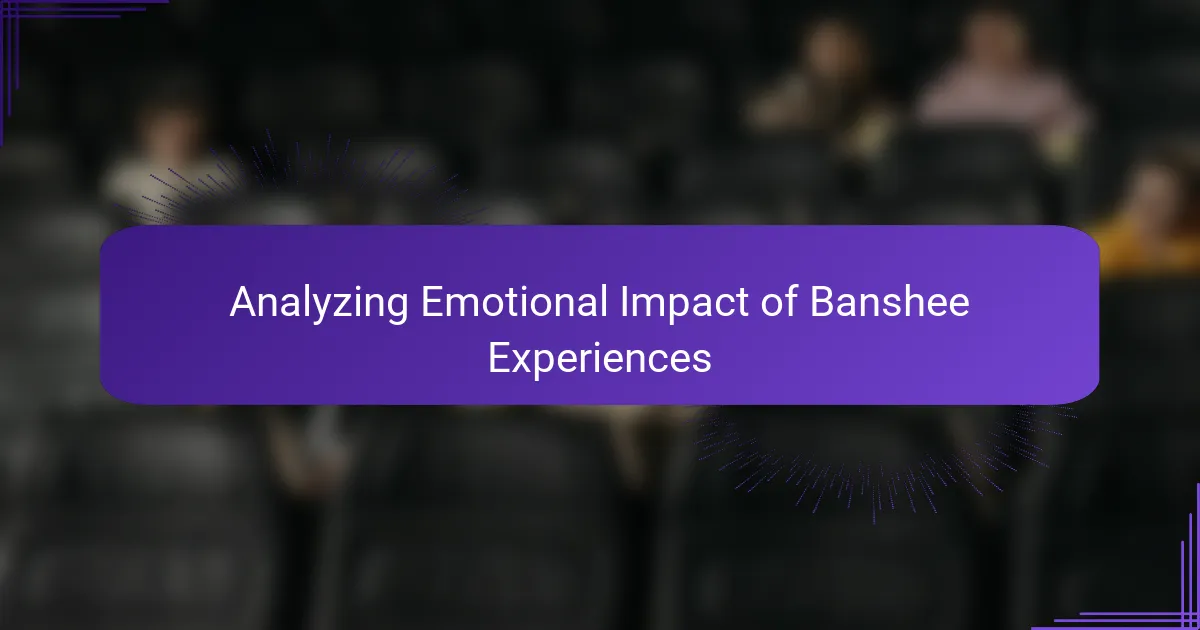
Analyzing Emotional Impact of Banshee Experiences
Experiencing or even just hearing about banshee encounters can stir a complex web of emotions—fear, sorrow, awe—that linger long after the moment passes. I’ve noticed that the initial shock often gives way to a deeper reflection on loss; it’s not just about being scared, but about confronting something profoundly human. Have you ever felt an emotion so tangled that it doesn’t fit neatly into just one feeling? That’s what these banshee experiences evoke for me.
What strikes me is how the banshee’s mournful wail seems to resonate differently depending on who hears it. Some describe a feeling of dread, while others talk about a strange kind of solace, as if the banshee somehow shares their grief rather than only signaling doom. From my viewpoint, this duality makes the emotional impact richer, reminding us that grief itself is multifaceted—not just a dark shadow, but a bond between the living and those they’ve lost.
I’ve spoken with people who, after a banshee experience, find themselves more vulnerable but also more connected to their emotions than before. It makes me wonder how much these stories do more than scare us—they might actually help us process feelings that are otherwise too painful to face head-on. Can folklore really offer a kind of emotional therapy, wrapped in eerie tales and haunted cries? For me, it certainly seems so.
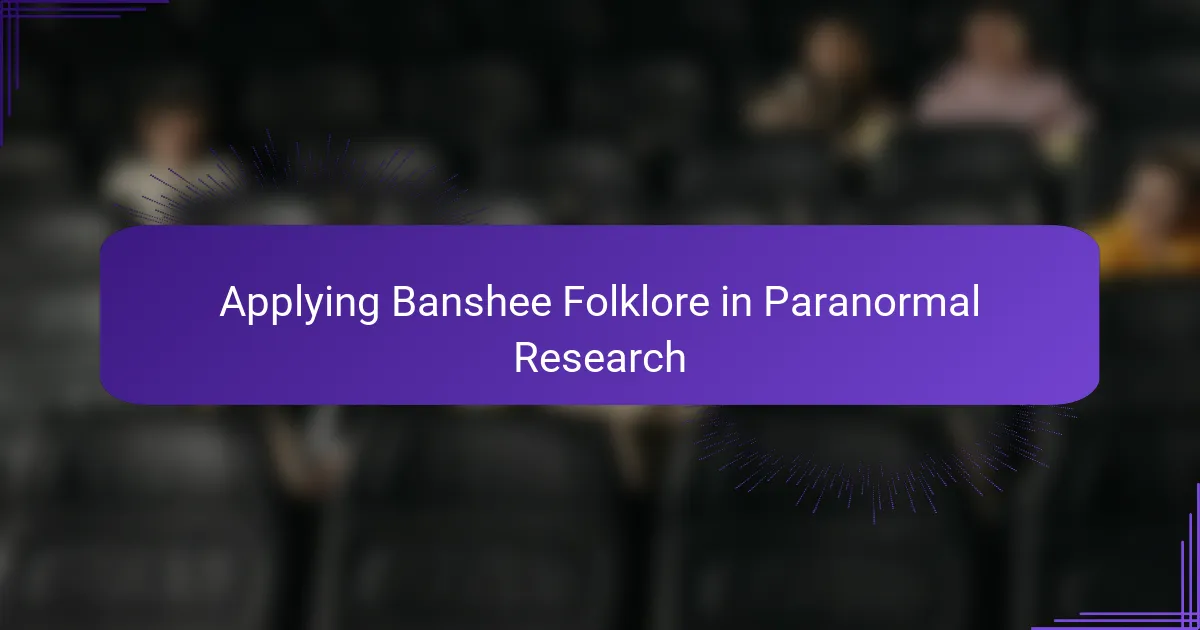
Applying Banshee Folklore in Paranormal Research
Applying banshee folklore in paranormal research has been a revealing journey for me. I’ve found that treating banshee sightings and sounds not just as spooky phenomena, but as expressions tied to grief and emotional energy, opens new avenues for investigation. Have you ever thought about how folklore might hold clues to understanding the emotional states behind paranormal events?
When I applied this perspective during fieldwork, I noticed that documenting the timing and emotional atmosphere around banshee encounters brought deeper insights. It wasn’t just about capturing evidence; it was about recognizing the banshee’s role as a symbolic bridge between the living and the departed. This approach shifted my research from searching for proof to interpreting the emotional context woven into the experiences.
More surprisingly, integrating banshee folklore helped me appreciate how collective memory influences paranormal reports. These stories often guide how witnesses perceive and emotionally process strange events. Isn’t it fascinating how folklore can shape not only what people see or hear but also how they feel about the unknown? For me, that realization has been transformative in how I conduct paranormal studies.
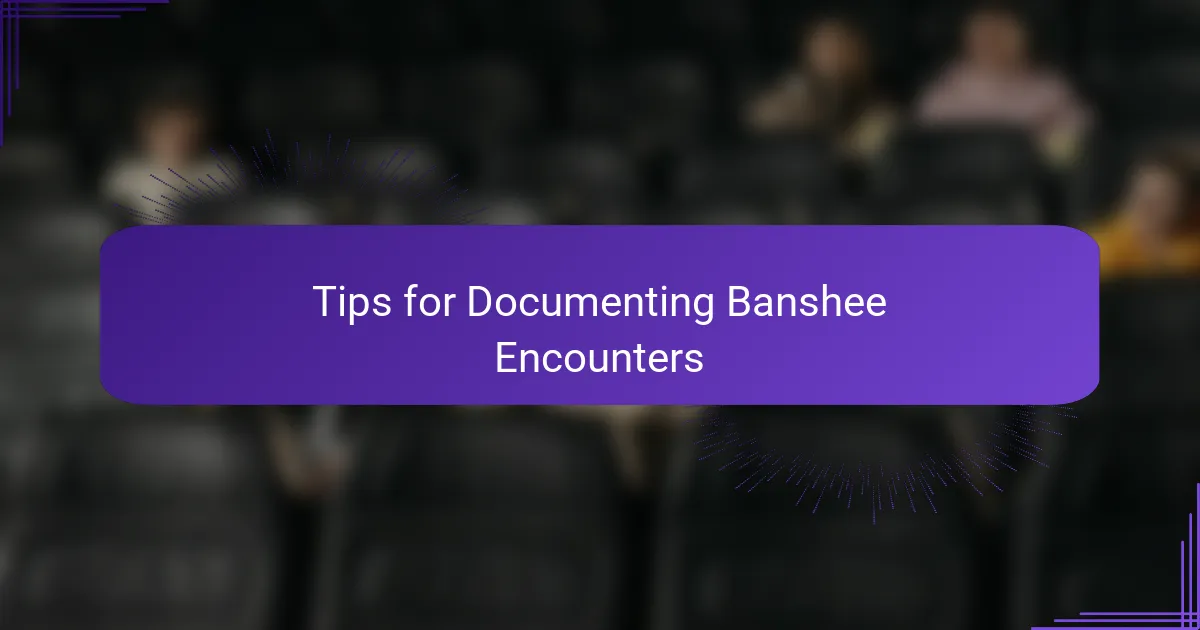
Tips for Documenting Banshee Encounters
When documenting banshee encounters, I’ve learned how crucial it is to capture as many sensory details as possible. I always encourage noting the time, place, and weather conditions, because these subtle context clues can reveal patterns that often go unnoticed at first. Have you ever tried writing down not just what you saw, but how the air felt or how the sounds echoed around you? Those small observations sometimes hold the key to understanding the experience more deeply.
Another tip I find invaluable is to record the emotional atmosphere—not just your own feelings, but also those of anyone else present. From my experience, banshee encounters don’t just involve a visual or auditory event; they carry a heavy emotional weight that lingers afterward. When I document these reactions, I get a clearer sense of the encounter’s impact, which sometimes speaks louder than any physical evidence.
Lastly, I believe patience is essential. I’ve seen firsthand how rushing to interpret or dismiss an encounter can cause important details to slip away. Taking the time to revisit notes, compare stories, and even reflect on your own changing perspective helps build a richer narrative. Have you noticed how your understanding of a haunting can deepen when you let it settle in, rather than trying to force an immediate explanation? That thoughtful approach has been a game-changer in my documentation process.